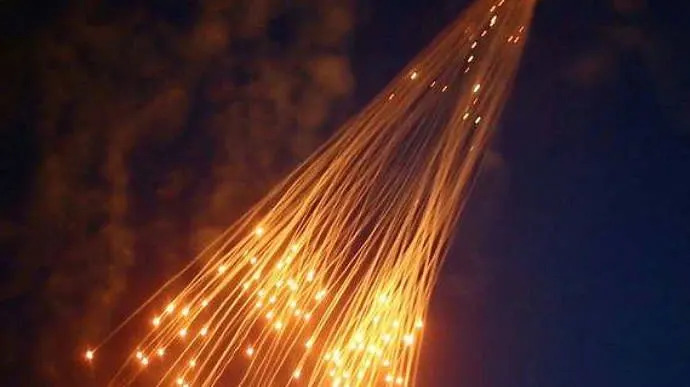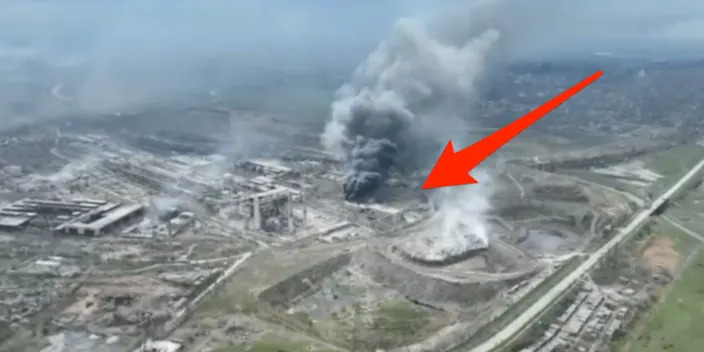LONDON (Reuters) -White, brightly burning munitions were shown cascading down on the Azovstal steel works in the Ukrainian port of Mariupol in what a British military expert said looked like either an attack with phosphorus or incendiary weapons.
President Volodymyr Zelenskiy said "delicate" negotiations were proceeding on rescuing Ukrainian servicemen holed up beneath the vast complex.
A Ukrainian officer among the remaining defenders said 600 fighters remained, 40 of them seriously injured. Civilians have been evacuated from the labyrinth of bunkers.
Reuters was not able to immediately identify the type of munitions being used on the Azovstal complex or when the video was taken. It was posted on Sunday on the Telegram messaging application by Alexander Khodakovsky, a commander of the pro-Russian self-proclaimed republic of Donetsk.
"If you didn't know what it is and for what purpose - you could say that it's even beautiful," Khodakovsky said in a message beside the video. Khodakovsky could not be immediately reached for comment.
It was not immediately clear which forces had fired the munitions, or from where.
NOT ENOUGH MEDICINE OR SURGICAL EQUIPMENT
Denys Shlega, a commander of Ukraine's National Guard, described conditions beneath the plant as dire.
"There is not enough medicine or surgical equipment," Shlega told Ukrainian television. "At the moment, we have about 600 people who are injured. About 40 in a very serious condition."
Shlega said Russian forces had penetrated into parts of the steel plant "but this is not yet significant and we are holding on ... holding on with our last forces."
Russian forces have pummeled Mariupol for nearly two months.
Russia has not commented on what specific weapons it has used to attack the plant. The Russian defence ministry did not reply to a written request for comment about the video.
Ukraine's armed forces declined to make an immediate official comment. The prosecutor's office said it had launched an investigation into possible use of incendiary weapons.
White phosphorus munitions can be used on battlefields to make smoke screens, generate illumination, mark targets or burn bunkers and buildings. White phosphorus is not banned as a chemical weapon under international conventions.
Human rights groups have urged a ban on the use of phosphorus munitions because of the severe burns they cause. The United States used phosphorus munitions in the Vietnam war and the 2003-2011 Iraq war. Russia used them in the Chechen wars.
Petro Andryushchenko, an aide to Mariupol's mayor, said that Russia had used incendiary or phosphorous bombs on Azovstal. Andryushchenko was speaking from Ukrainian-controlled territory. Reuters was unable to immediately verify his comments.
Hamish Stephen de Bretton-Gordon, a former commanding officer of Britain's Joint Chemical, Biological, Radiological and Nuclear Regiment, said it looked very much like phosphorus in the video, but only a sample could give absolute confirmation.
"It does look very much like white phosphorus rockets or artillery shells which are exploding just above the ground or upon the ground," he told Reuters.
(Additional reporting by Tom Balmforth and Natalia Zinets in Kyiv; Writing by Guy Faulconbridge; Editing by David Clarke)
Russians confirm they are hitting Ukrainian targets with banned cluster and phosphorus weapons Security Service of Ukraine
















